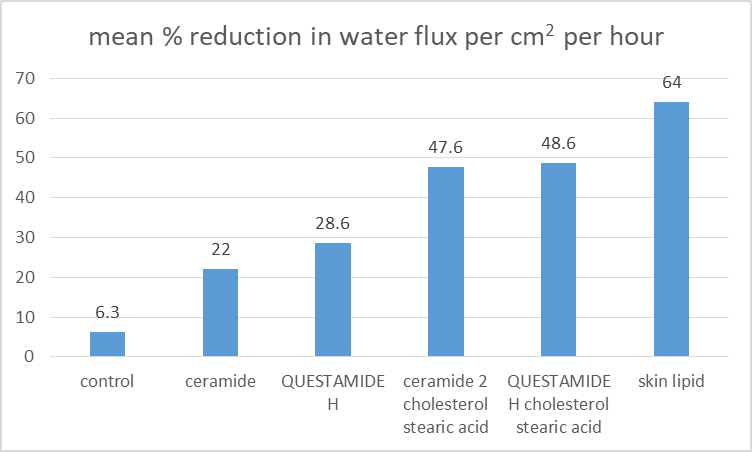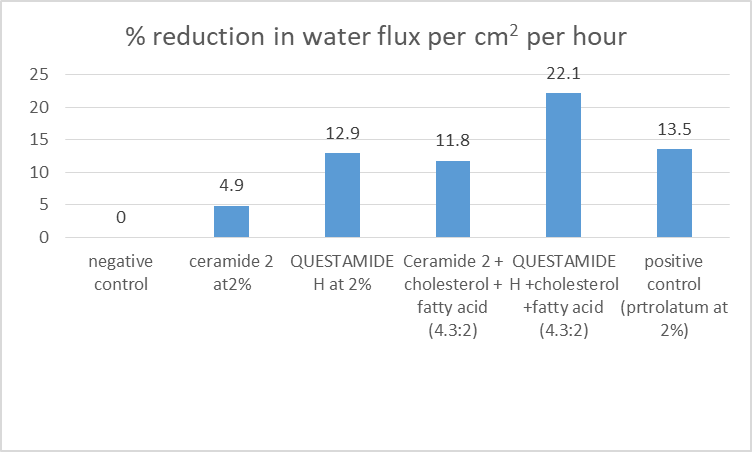Nanoactive Repair is a novel ceramide nanoliposome preparation (NanoLiposomal Repair).
Product Name: Nano Liposomal Ceramide; Nanoactive Ceramide; BioaActive Ceramide; Soluble Ceramide; Nanoactive Repair; Bioa Active Repair; SymRepair 100 CAS: 100403-19-8
Description: The results of skin research indicate thatceramide is the main component of the skin’s stratum corneum lipids, accounting for about 50% of the epidermal keratinous lipid content. It plays a key role in the physiological function of the stratum corneum and takes on the role of skin protection, moisturizing and nourishing. The application of a skincare product containing ceramide for external use can achieve the purpose of preventing allergic skin diseases and the effect of suppressing melanin brown spots. The ceramide-3 with the same structure as natural ceramide is used as the raw material. The nano-ceramides, developed with the nano-transmission system (NDS), has a particle size of less than 30nm, which solves the problems of solubility and irritation, so that it is stably encapsulated in nano-carriers to synergize with natural stratum corneum components of skin, such as phospholipids, cholesterol and stearic acid to repair the barrier.

Ceramide-3 structure
The main role of ceramide in the stratum corneum of the epidermis:
- Barrier: As long as the ceramide is removed from the epidermis, the barrier function of the skin disappears.
- Adhesion: Ceramide can significantly enhance the adhesion between keratinocytes, improve skin dryness and reduce skin desquamation.
- Moisturizing: Ceramide has a strong ability to associate water molecules, maintaining the moisture of the skin by forming a network in the stratum corneum.
- Anti-aging: Ceramide can improve skin dryness, desquamation, roughness and tarnishing, increase skin thickness, improve skin moisturizing ability, reduce wrinkles, increase skin elasticity and delay skin aging.
- Anti-allergy: Ceramide can help the stratum corneum thicken significantly, improve the skin’s tolerance, inhibit the invasion of harmful substances from the outside, avoid the sensitivity of skin caused by the invasion, and have the effect of restoring couperose skin.
However, many skin conditions can cause a decrease in ceramide levels leading to impaired skin barrier (more than 50% reduction in total ceramide or single ceramide):
- Aging
- Allergic dermatitis
- Dry skin / dry skin in winter
- Dandruff
- Psychological stress
- Gender (older women versus older men)
- Race/skin type
Ceramide is the most important component of the lipid barrier of the skin, and ceramide can repair the skin barrier function. However, it is difficult to extract natural ceramides, to synthesize natural ceramides, to formulate natural or natural ceramides with high melting point (over 90 C), and to crystallize low concentration, ineffective and high concentration products, which limit the use of ceramides. A new type of synthetic ceramide developed similar to the natural ceramide structure is used as the raw material, and the nano-ceramides with a particle size of less than 30 nm developed by the nano-transport system (NDS) have solved the problem of solubility and applicability. It is stably encapsulated in a nanocarrier to synergize with skin natural stratum corneum components such as phospholipids, cholesterol and stearic acid to repair the barrier.
Research shows this product has:
- A dose-dependent feature in repairing skin lesions
- A comparable efficacy to natural ceramide
- An effect of preventing skin lesions
- A restoring effect
- A good moisturizing effect

Ceramide for allergic skin repair

Ceramide can effectively reduce the water flux of defatted pigskin (in vitro)

Ceramide effectively reduces the transepidermal water loss rate of human bodies (TEWL)
Applications:
- Skincare
- Bodycare
- Facial care
- Dry skin care
- Winter skincare
- Daily skincare
- Anti-aging products
- Products for sensitive skin
- Sunscreen products
- After-sun repair products
Use:Add it at an ordinary temperature; recommended dosage: 5-10%. Better effect with products such as yeast glucan liposome.
Storage: Keep it away from light at a temperature below 25℃.
